It looks like you're using an Ad Blocker.
Please white-list or disable AboveTopSecret.com in your ad-blocking tool.
Thank you.
Some features of ATS will be disabled while you continue to use an ad-blocker.
23
share:
On October 21, 1638, in the village of Widecombe-in-the-Moor, Devon, England, the church of St. Pancras was damaged in a severe storm that left four
dead and sixty-two others injured. The damage wrought by the incident, known as The Great Thunderstorm (of Widecombe-in-the-Moor), has long been
attributed to ball-lightning but local legend suggests that there could be more to the story...
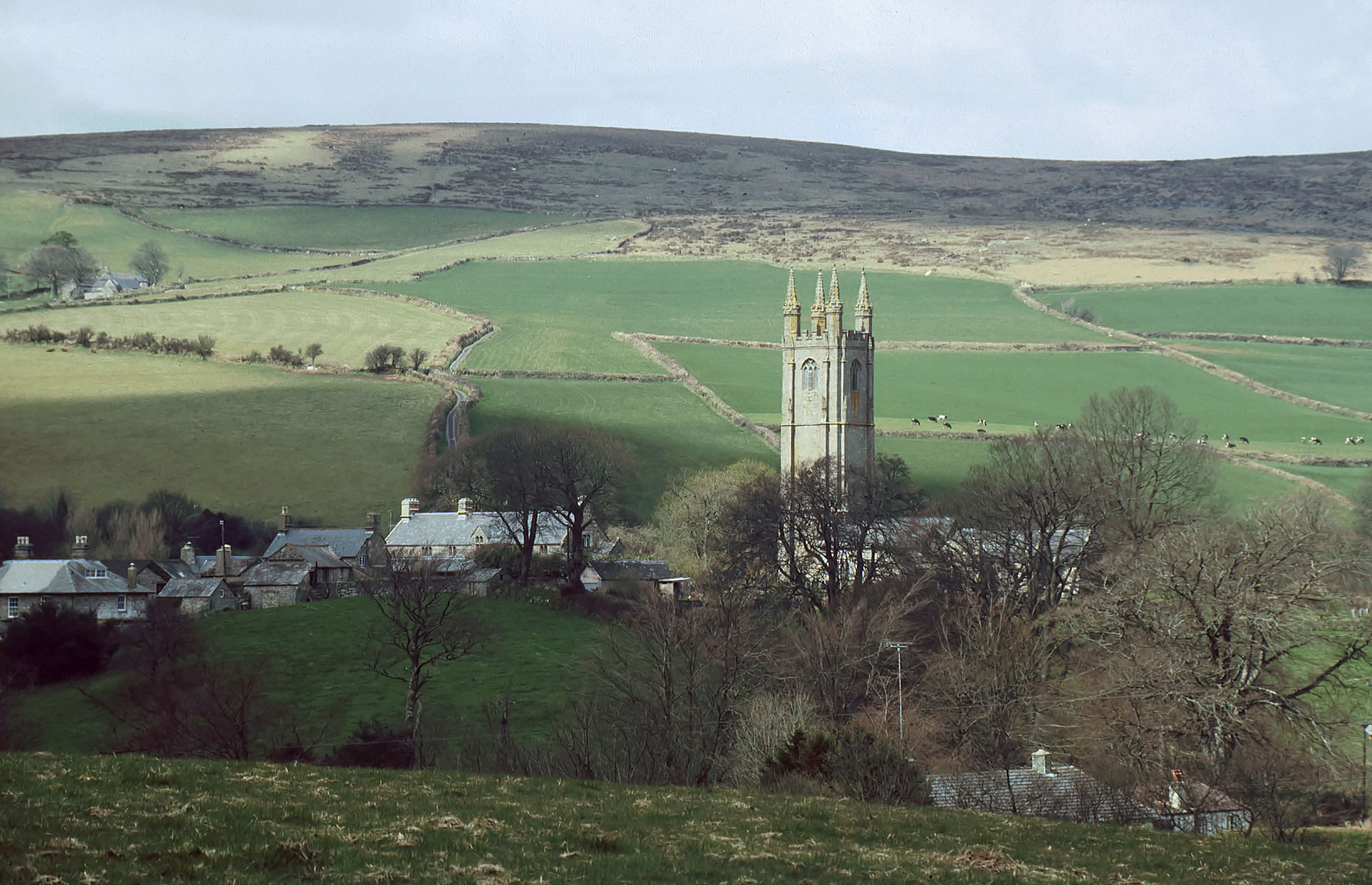 Church of St. Pancras. Image credit:
Wikimedia commons
Church of St. Pancras. Image credit:
Wikimedia commons
The Legend
While there exists some variation in the telling of the tale, the gist is that on that fateful day, the Devil came down to Widecombe and he was looking for a soul to steal (I'm from GA, sue me).
Legend holds that a man, dressed in black and having legs ending in cloven hooves, was riding the road to Widecombe on an inky black steed when he stopped in for a drink at the Tavistock Inn in nearby Poundsgate. It is said that as he drank, a hissing noise could be heard emanating from his gullet and that the empty mug scorched the bar when he placed it down. After finishing his drink, he left payment in coin and it's alleged that after he rode off, the coins turned to dried leaves.
Depending on which version of the legend to which one subscribes, the Devil was either there to collect the souls of four men who were playing cards in church or the soul of just one man, Jan Reynolds, who'd made a pact with the Devil with a clause that if he were found to be sleeping in church, the Devil could take his soul. In the latter version, the Devil ties up his horse outside and enters the church to collect the (possibly sleeping) Reynolds. After procuring his prize, the Devil rode off into the storm with the damned soul and supposedly four aces fell from Reynold's deck and the spots where they landed can be still be seen today from the Warren House Inn, in the form of ancient field enclosures in the shape of each suit's symbol.
Witness Accounts
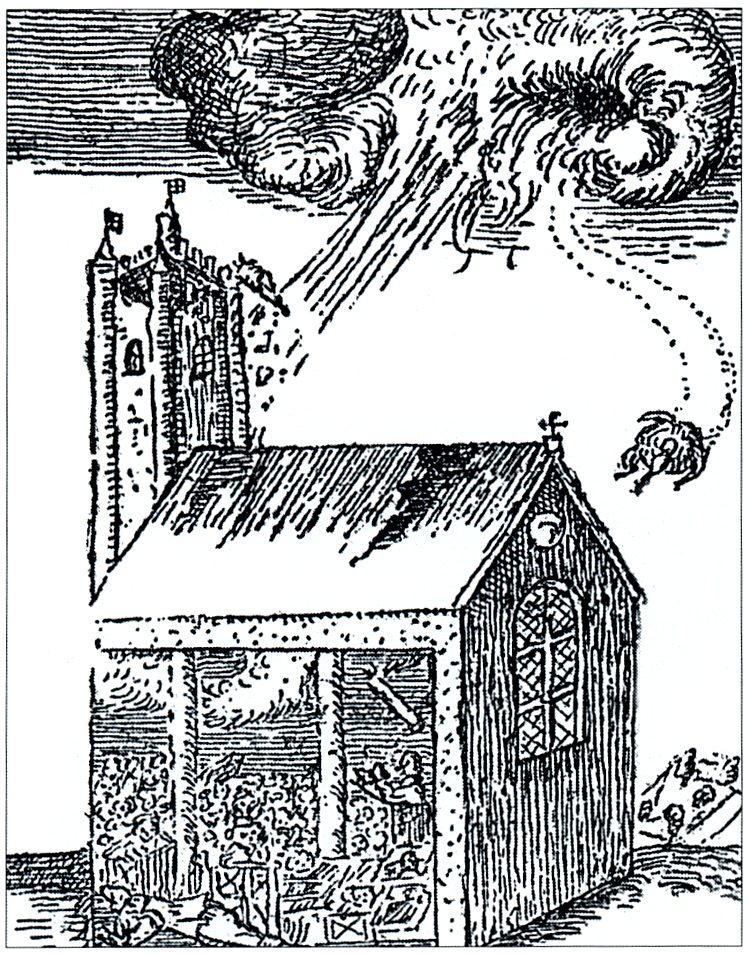 Contemporaneous woodcutting depicting the storm. Image credit:
Wikimedia
commons
Contemporaneous woodcutting depicting the storm. Image credit:
Wikimedia
commons
From Wikipedia:
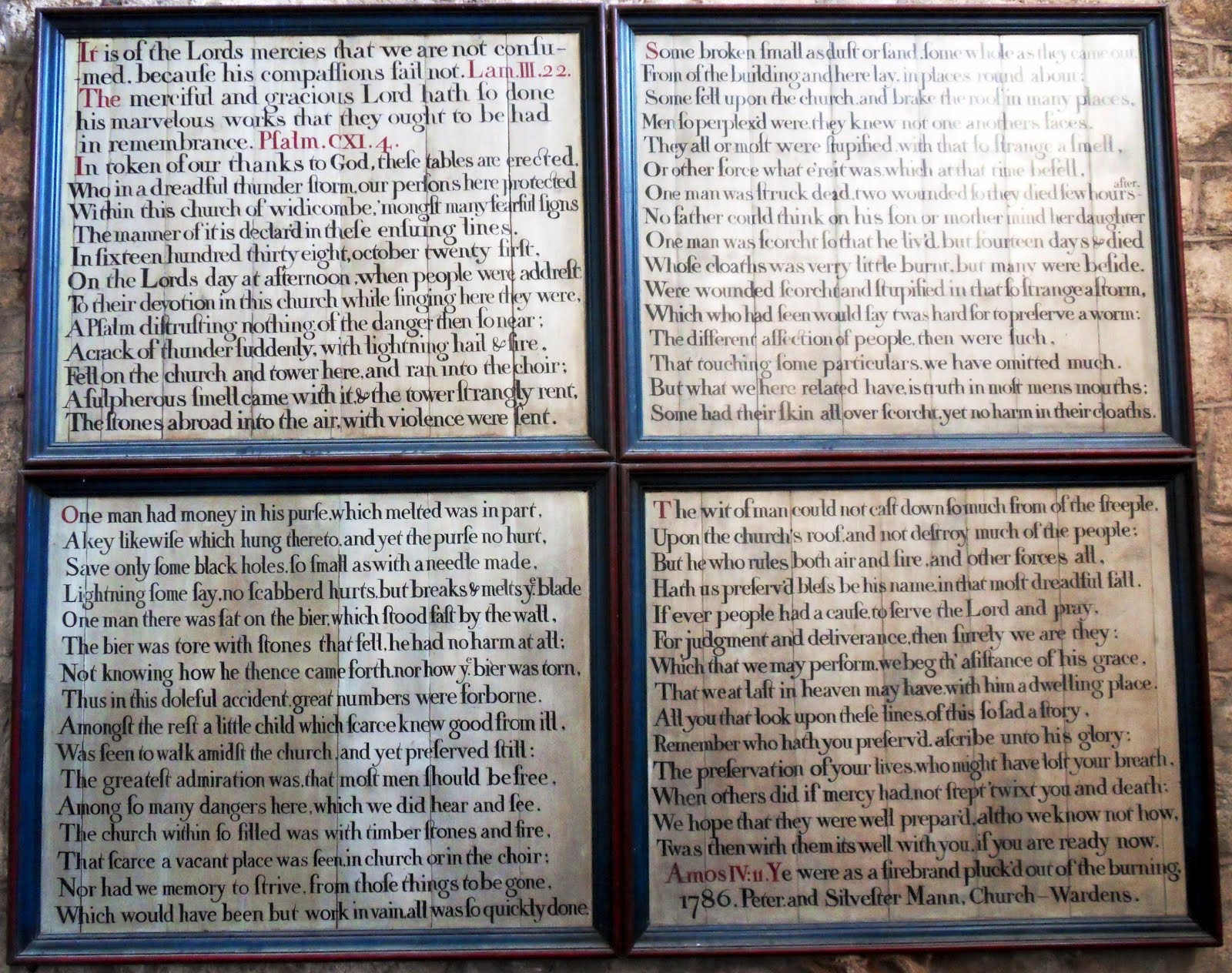 Boards from St. Pancras. Full-size
Image credit: 67 Not Out
Boards from St. Pancras. Full-size
Image credit: 67 Not Out
A few excerpts from the testament as written on the boards:
A crack of thunder suddenly, with lighting hail & fire,
Fell on the church and tower here, and ran into the choir;
A sulpherous smell came with it & the tower strangely rent,
The stones abroad into the air, with violence were sent.
One man had money in his purse, which melted was in part,
A key likewise which hung thereto and yet the purse no hurt,
Save only some black holes. So small as with needle made,
Some fell upon the church, and brake the roof in many places.
Men so perplexd were, they knew not one another's faces.
They all or most were stupified that with so strange a smell,
Or other force what e'er it was which at the time befell.
Some had their skin all over scorcht, yet no harm in their cloaths.
This is exactly the sort of thing that would be perfect for a general mysterious subject matters forum! Lastly, I was inspired to write on the topic after reading this piece from Nick Redfern that appeared on my feed this afternoon.

The Legend
While there exists some variation in the telling of the tale, the gist is that on that fateful day, the Devil came down to Widecombe and he was looking for a soul to steal (I'm from GA, sue me).
Legend holds that a man, dressed in black and having legs ending in cloven hooves, was riding the road to Widecombe on an inky black steed when he stopped in for a drink at the Tavistock Inn in nearby Poundsgate. It is said that as he drank, a hissing noise could be heard emanating from his gullet and that the empty mug scorched the bar when he placed it down. After finishing his drink, he left payment in coin and it's alleged that after he rode off, the coins turned to dried leaves.
Depending on which version of the legend to which one subscribes, the Devil was either there to collect the souls of four men who were playing cards in church or the soul of just one man, Jan Reynolds, who'd made a pact with the Devil with a clause that if he were found to be sleeping in church, the Devil could take his soul. In the latter version, the Devil ties up his horse outside and enters the church to collect the (possibly sleeping) Reynolds. After procuring his prize, the Devil rode off into the storm with the damned soul and supposedly four aces fell from Reynold's deck and the spots where they landed can be still be seen today from the Warren House Inn, in the form of ancient field enclosures in the shape of each suit's symbol.
Witness Accounts

From Wikipedia:
Written accounts by eyewitnesses, apparently published within months of the catastrophe, tell of a strange darkness, powerful thunder, and "a great ball of fire" ripping through a window and tearing part of the roof open. It is said to have rebounded through the church, killing some members of the congregation and burning many others. This is considered by some to be one of the earliest recorded instances of ball lightning.
The priest, George Lyde, was unhurt, but his wife "had her ruff and the linen next her body, and her body, burnt in a very pitiful manner". The head of local warrener Robert Mead struck a pillar so hard that it left an indentation; his skull was shattered, and his brain hurled to the ground. A "one Master Hill a Gentleman of good account in the Parish" was thrown violently against a wall and died "that night". His son, sitting next to him, was unhurt.
Some are said to have suffered burns to their bodies, but not their clothes. A dog is reported to have run out of the door, been hurled around as if by a small tornado, and fallen dead to the ground.
The village schoolmaster of the time, a gentleman called Roger Hill, and brother of the deceased "Master Hill", recorded the incident in a rhyming testament which is still displayed on boards (originals replaced in 1786) in the church.

A few excerpts from the testament as written on the boards:
A crack of thunder suddenly, with lighting hail & fire,
Fell on the church and tower here, and ran into the choir;
A sulpherous smell came with it & the tower strangely rent,
The stones abroad into the air, with violence were sent.
One man had money in his purse, which melted was in part,
A key likewise which hung thereto and yet the purse no hurt,
Save only some black holes. So small as with needle made,
Some fell upon the church, and brake the roof in many places.
Men so perplexd were, they knew not one another's faces.
They all or most were stupified that with so strange a smell,
Or other force what e'er it was which at the time befell.
Some had their skin all over scorcht, yet no harm in their cloaths.
This is exactly the sort of thing that would be perfect for a general mysterious subject matters forum! Lastly, I was inspired to write on the topic after reading this piece from Nick Redfern that appeared on my feed this afternoon.
edit on 2015-1-13 by theantediluvian because: (no reason given)
Cool story Bro... very interesting never come across it before. Good read.
Interesting little local legend. But it's a cautionary tale, this simply confirms why you never let the Devil outsmart you.
One wonders if they suffered a microburst or something along with their lightning strike.
One wonders if they suffered a microburst or something along with their lightning strike.
a reply to: DustbowlDebutante
Thanks! I didn't even make that connection until you pointed it out. Only seventeen years separating the two events.
Thanks! I didn't even make that connection until you pointed it out. Only seventeen years separating the two events.
a reply to: EnigmaAgent
a reply to: Jenisiz
Thanks!
a reply to: ketsuko
Odd that you would say that rather than saying the takeaway was to never make deals with the Devil!
a reply to: Jenisiz
Thanks!
a reply to: ketsuko
Interesting little local legend. But it's a cautionary tale, this simply confirms why you never let the Devil outsmart you.
One wonders if they suffered a microburst or something along with their lightning strike.
Odd that you would say that rather than saying the takeaway was to never make deals with the Devil!
Interesting tale.
This is similar to the black beast tale.
The thing is, During this particular time in history. Witches were being hunted out, Hung and people who communicated with the *Spirits* of the wild were deemed devil worshippers.
This particular instance could of been a retelling of a type of revenge act.
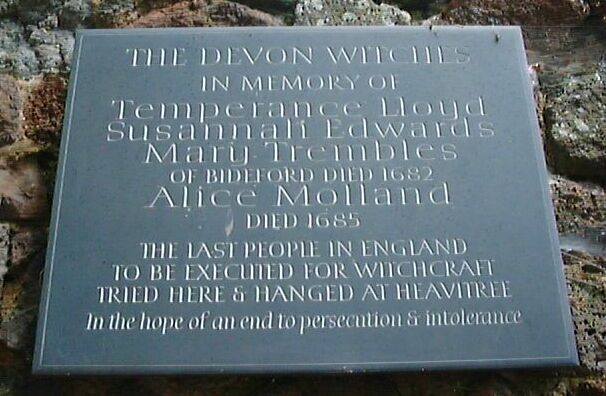
Thing is, people were hilarious back in the day and tended to absolve the number of people they merked because of suspecions of witchcraft.
It may be that the man didn`t sell his soul. But possibly took part in some sort of hanous crime against say. A witch or a couple shamans?
Considering that it takes more than one person to do these types of things usually. What if this is the case. And when that storm burst through the church it slayed everyone who participated. Which is why many others were unhurt.
Just a guess.
This is similar to the black beast tale.
The thing is, During this particular time in history. Witches were being hunted out, Hung and people who communicated with the *Spirits* of the wild were deemed devil worshippers.
This particular instance could of been a retelling of a type of revenge act.

Thing is, people were hilarious back in the day and tended to absolve the number of people they merked because of suspecions of witchcraft.
It may be that the man didn`t sell his soul. But possibly took part in some sort of hanous crime against say. A witch or a couple shamans?
Considering that it takes more than one person to do these types of things usually. What if this is the case. And when that storm burst through the church it slayed everyone who participated. Which is why many others were unhurt.
Just a guess.
Btw this wasn't the only town to be ransacked by the *Forces of Darkness* Because of Witch hunting and hanging.
This is probably what lead to them ending the hunt on Witches and shamans.
Because of the fear of spiritual powers causing paranormal vengeance.
There is actually some famous cases of this. Where the towns people would execute an *Innocient* man. Who in fact was a witch. The town is then plagued by a black beast which slays many people.
The black beast of Moor i think is it's name?
Black Dogs, Church Grims and Hell Hounds Supernatural Canines in British Folklore
Heres an account The Hellhound of Bungay
www.bungay-suffolk.co.uk...
This is probably what lead to them ending the hunt on Witches and shamans.
Because of the fear of spiritual powers causing paranormal vengeance.
There is actually some famous cases of this. Where the towns people would execute an *Innocient* man. Who in fact was a witch. The town is then plagued by a black beast which slays many people.
The black beast of Moor i think is it's name?
Black Dogs, Church Grims and Hell Hounds Supernatural Canines in British Folklore
Heres an account The Hellhound of Bungay
Perhaps the most piteous and disconcerting of Hellhound accounts took place in the little town of Bungay in Suffolk, England, back in the 16th century. On Sunday, 4th August 1577, a terrible thunderstorm broke out in the town of Bungay, a storm best describable with the adjectives: “darkness, rain, hail, thunder and lightning as was never seen the like”. The puny thatched cottages of the helpless townsfolk were being fiercely swiped away by its rage, and so, the incapable country people, hoping that only a miracle could save them, knelt at the St. Mary’s Church, the religious heart of the town. As they prayed petitionary for help, while the appearance of a beautiful angel with charming white wings would have been more appropriate for the situation, what fate had decided was completely reverse. Lightning struck at the Church, and what appeared before its doors was a gigantic black hound, its bloodthirsty fangs vehement to be pierced against the tender flesh of its prey. What happened afterwards is described by the following olden verse:
All down the church in midst of fire, the hellish monster flew
And, passing onward to the quire, he many people slew Instead of being scared to death by the holy might of the church, the diablo simply dashed in, tearing off people’s throats and strangling worshippers with its front paws. Such heat radiated from its foul physique of the beast, that it instantaneously vaporized anyone nearby. Then after satisfying its appetite with the horrified screams of the masses, the dog suddenly disappeared, reappearing 12 miles farther at the Blythburgh Church, where it resumed its brutal activities, ripping the lives out of innocent victims.
While most will be content with merely hearing such a nerve-racking tale, more serious people will be craving for evidence. Hear’s to their satisfaction: The records of the St. Mary’s Church show that a huge thunderstorm did break out on the said date, and two people were killed at the belfry. However, there is no further elaboration as to the circumstances and cause of their death. However, the Blythburgh Church wins the day as it boasts off several scratches made on its north entrance, allegedly by the claws of the same Black Dog.
www.bungay-suffolk.co.uk...
edit on
13-1-2015 by AnuTyr because: (no reason given)
a reply to: AnuTyr
Nick Redfern makes the same connection to the incidents at Bungay and Blythburgh in the article that I linked at the bottom of the OP. There are quite a few similarities but also notable differences:
None of the accounts of the incident at Widecombe mention a Black Shuck like beast though they do mention a great ball of fire. Widecombe also has the benefit of some firmer historical corroboration in the boards at the church. By contrast, the Churchwardens' account of the incident at St. Mary's only mentions two men killed in the belfry (by lightning) and I don't think anyone was recorded as being killed (officially anyway) in Blythburgh. It seems likely to me that much of the tale is due to the embellishment of Rev. Abraham Fleming in A Straunge and Terrible Wunder — though he may have been faithfully repeating what he'd heard.
Nick Redfern makes the same connection to the incidents at Bungay and Blythburgh in the article that I linked at the bottom of the OP. There are quite a few similarities but also notable differences:
None of the accounts of the incident at Widecombe mention a Black Shuck like beast though they do mention a great ball of fire. Widecombe also has the benefit of some firmer historical corroboration in the boards at the church. By contrast, the Churchwardens' account of the incident at St. Mary's only mentions two men killed in the belfry (by lightning) and I don't think anyone was recorded as being killed (officially anyway) in Blythburgh. It seems likely to me that much of the tale is due to the embellishment of Rev. Abraham Fleming in A Straunge and Terrible Wunder — though he may have been faithfully repeating what he'd heard.
a reply to: theantediluvian
I was going to point out that in most American stories of a similar theme, the Americans do indeed outsmart the Devil.
But yes, the general assumption is that you just shouldn't go there in the first place.
I was going to point out that in most American stories of a similar theme, the Americans do indeed outsmart the Devil.
But yes, the general assumption is that you just shouldn't go there in the first place.
I remember a thread of this story that included a picture of the ring burned into the wood at the bar from the mug the devil drank from. Apparently
the bar still exists unless that image was just an embellishment. I think it was an ATS thread.
a reply to: 3n19m470
I think you might actually be thinking of the scorch marks on the north door of the the Holy Trinity Church in Blythburgh which are alleged to have been left by the hellhound/Black Shuck in 1577.
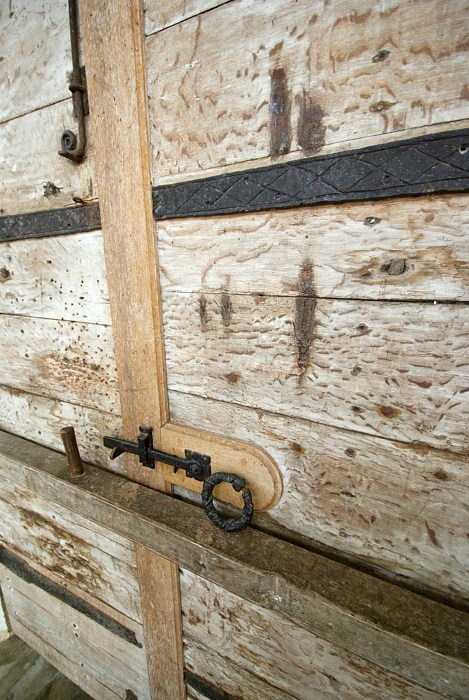
Also, here's a link to a really good source for the legend of Jan Reynolds and The Great Thunderstorm. Tons of additional information for anyone who wants to do further reading.
I think you might actually be thinking of the scorch marks on the north door of the the Holy Trinity Church in Blythburgh which are alleged to have been left by the hellhound/Black Shuck in 1577.

Also, here's a link to a really good source for the legend of Jan Reynolds and The Great Thunderstorm. Tons of additional information for anyone who wants to do further reading.
Fire hot enough to melt metal, but not cloth?
Sounds like the cases of spontaenous combustión were the bodies are incinerated yet the surrounding furniture is untouched or charred...
Sounds like the cases of spontaenous combustión were the bodies are incinerated yet the surrounding furniture is untouched or charred...
originally posted by: theantediluvian
a reply to: andy1972
It's not uncommon to hear of severe burns caused by metal objects, such as jewelry, melting when a person is struck by lightning.
Yes, but if you read the poem written by Hill's brother, he states that money was melted in a purse but the purse suffered only "holes so small as if by a needle were made"..
Something provoked a heat so intense it melted coins in a purse, yet the purse itself was left barely scathed?
a reply to: theantediluvian
The photo (and thread) seems to be elusive, but I found this site that has reviews from customers at Tavistock Inn.
www.pubtrail.co.uk...
The first review on the list mentions how they were shown the burn mark from the devil's beer stein. I also found an image of a burnt mark in the shape of a ring but it was a still from a documentary made of the incident. From what I read, they filmed inside the tavern and tried to make everything historically accurate, so I believe it may actually be "the mark".
At the bottom of this site there is a smattering of about 7 pics, one titled "The Devil's Ale" shows the ring next to a mug.
Actually here's the link to the still.. www.legendarydartmoor.co.uk...
The photo (and thread) seems to be elusive, but I found this site that has reviews from customers at Tavistock Inn.
www.pubtrail.co.uk...
The first review on the list mentions how they were shown the burn mark from the devil's beer stein. I also found an image of a burnt mark in the shape of a ring but it was a still from a documentary made of the incident. From what I read, they filmed inside the tavern and tried to make everything historically accurate, so I believe it may actually be "the mark".
At the bottom of this site there is a smattering of about 7 pics, one titled "The Devil's Ale" shows the ring next to a mug.
Actually here's the link to the still.. www.legendarydartmoor.co.uk...
edit on 1/25/2015 by 3n19m470 because: (no reason given)
new topics
-
This is our Story
General Entertainment: 25 minutes ago -
President BIDEN Vows to Make Americans Pay More Federal Taxes in 2025 - Political Suicide.
2024 Elections: 2 hours ago -
Ode to Artemis
General Chit Chat: 3 hours ago -
Ditching physical money
History: 6 hours ago -
One Flame Throwing Robot Dog for Christmas Please!
Weaponry: 7 hours ago -
Don't take advantage of people just because it seems easy it will backfire
Rant: 7 hours ago -
VirginOfGrand says hello
Introductions: 8 hours ago -
Should Biden Replace Harris With AOC On the 2024 Democrat Ticket?
2024 Elections: 8 hours ago -
University student disciplined after saying veganism is wrong and gender fluidity is stupid
Education and Media: 11 hours ago
top topics
-
Hate makes for strange bedfellows
US Political Madness: 17 hours ago, 20 flags -
University student disciplined after saying veganism is wrong and gender fluidity is stupid
Education and Media: 11 hours ago, 12 flags -
Police clash with St George’s Day protesters at central London rally
Social Issues and Civil Unrest: 14 hours ago, 9 flags -
President BIDEN Vows to Make Americans Pay More Federal Taxes in 2025 - Political Suicide.
2024 Elections: 2 hours ago, 8 flags -
TLDR post about ATS and why I love it and hope we all stay together somewhere
General Chit Chat: 15 hours ago, 7 flags -
Should Biden Replace Harris With AOC On the 2024 Democrat Ticket?
2024 Elections: 8 hours ago, 6 flags -
Don't take advantage of people just because it seems easy it will backfire
Rant: 7 hours ago, 4 flags -
One Flame Throwing Robot Dog for Christmas Please!
Weaponry: 7 hours ago, 4 flags -
God lived as a Devil Dog.
Short Stories: 12 hours ago, 3 flags -
Ditching physical money
History: 6 hours ago, 3 flags
active topics
-
New whistleblower Jason Sands speaks on Twitter Spaces last night.
Aliens and UFOs • 47 • : Ophiuchus1 -
Hate makes for strange bedfellows
US Political Madness • 39 • : 19Bones79 -
Lawsuit Seeks to ‘Ban the Jab’ in Florida
Diseases and Pandemics • 29 • : Cre8chaos79 -
TLDR post about ATS and why I love it and hope we all stay together somewhere
General Chit Chat • 8 • : Cre8chaos79 -
This is our Story
General Entertainment • 0 • : BrotherKinsMan -
British TV Presenter Refuses To Use Guest's Preferred Pronouns
Education and Media • 126 • : Asher47 -
Why to avoid TikTok
Education and Media • 17 • : mooncake -
The Superstition of Full Moons Filling Hospitals Turns Out To Be True!
Medical Issues & Conspiracies • 22 • : mooncake -
University student disciplined after saying veganism is wrong and gender fluidity is stupid
Education and Media • 23 • : BigDuckEnergy -
President BIDEN Vows to Make Americans Pay More Federal Taxes in 2025 - Political Suicide.
2024 Elections • 3 • : BingoMcGoof
23
